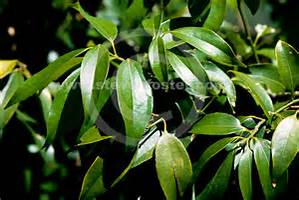Cinnamomum cassia, called Chinese cassia or Chinese cinnamon, is an evergreen tree originating in southern China, and widely cultivated there and elsewhere in southern and eastern Asia (India, Indonesia, Laos, Malaysia, Taiwan, Thailand, and Vietnam). It is one of several species of Cinnamomum used primarily for their aromatic bark, which is used as a spice. In the United States, Chinese cassia is the most common type of cinnamon used. The buds are also used as a spice, especially in India, and were once used by the ancient Romans.
Cinnamomum cassia is a medicinal plant that contains cinnamic aldehyde. Studies of cinnamic aldehyde treatment in mid-aged rats have resulted in alleviation of chronic unexpected stress-induced depressive-like behaviors. Cinnamic aldehyde is an enzyme inhibitor drug, immunologic drug, and an anti-inflammatory drug. It is administered orally to treat behavioral and mental disorders, targeting the hippocampus and the frontal cortex. Current findings might be beneficial in treating subjects in depression.
A unique collection of 31 natural compounds from Eucommia ulmoides Oliver
A unique collection of 22 natural compounds from Polygala tenuifolia Willd.
A unique collection of 29 natural compounds from Andrographis paniculata (Burm. f.) Nees
A unique collection of 30 natural compounds from Citrus reticulata
A unique collection of 29 natural compounds from Scutellaria baicalensis Georgi
A unique collection of 21 natural compounds from Angelica dahurica(Fisch.et Hoffm.)Benth.et Hook.f.ex Franch.et Sav.cv.Hangbaizhi Hort.
A unique collection of 31 natural compounds from Rauvolfia verticillata (Lour.) Baill.
A unique collection of 22 natural compounds from Glycyrrhiza glabra L.





